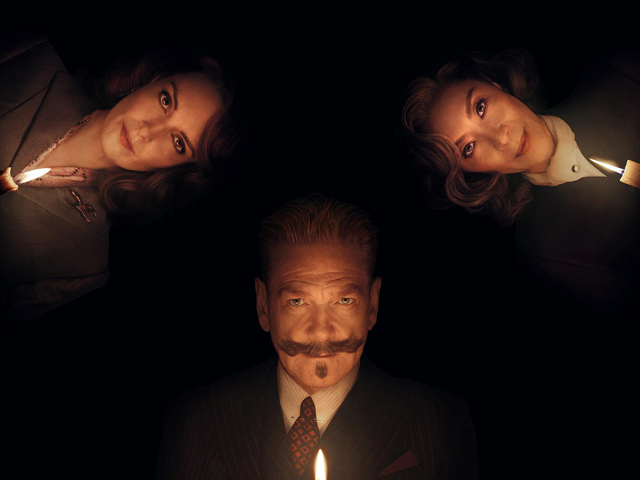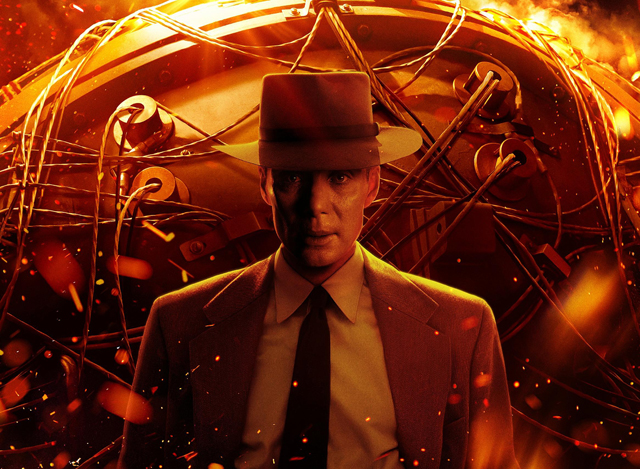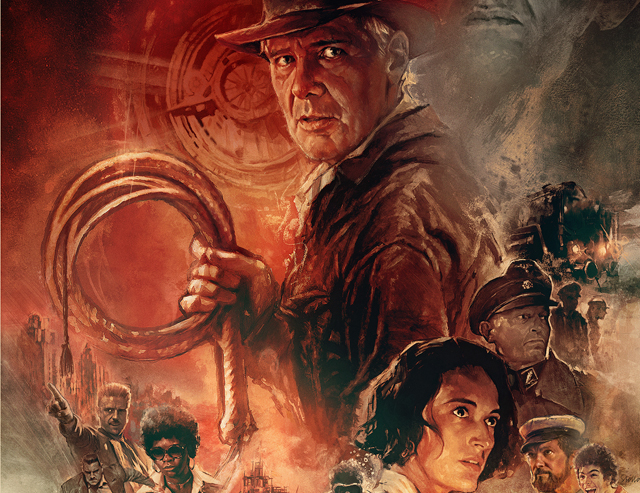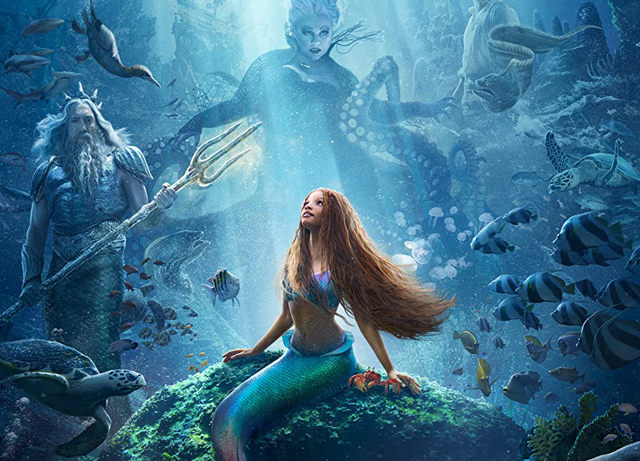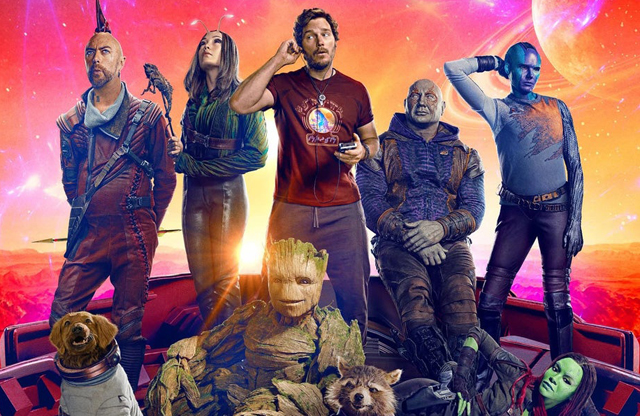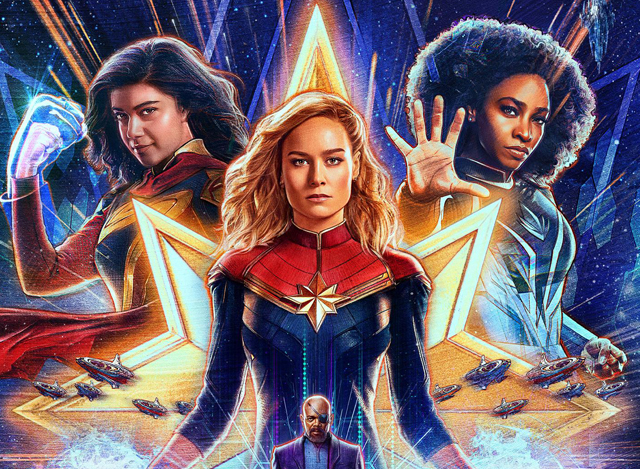
There is no doubt that the 2010’s belonged to Marvel Studios at the box office. The comic book movie machine dominated the multiplexes, creating the most lucrative franchise in Hollywood history with a connected universe of super hero franchises all contributing to a grander narrative while also working perfectly well on their own. The Marvel Cinematic Universe reshaped the way stories could be told on the big screen, and suddenly every other studio was looking for their own cinematic universe to mine gold from. But few if any could do what Marvel had done. Under the leadership of studio head Kevin Feige, and with the deep pockets of their parent company Disney, they managed to build upon each movie they put out, making each one more profitable than the last. But of course, all roads must lead somewhere, and the culmination of all of these connected stories in their movie train had to have a satisfying conclusion to justify the audiences’ time and money spent watching them. The collection of Avengers movies in Marvel’s first three phases made excellent destination points to drive the story towards, creating monumental adventures that loom large over all the other stories told up to that point, but also satisfying our desire to see all threads woven together and having all of our heroes sharing the screen together. The first decade of Marvel’s master plan culminated in the two part saga of Avengers: Infinity War (2018) and Avengers: Endgame (2019), and given how well Marvel mastered their storytelling craft over those ten years, audiences were overwhelmingly ecstatic with the results. What became known as the Infinity Saga is a masterclass in franchise building over multiple individual story arcs with many different star characters. Marvel managed to successfully wrap their colossal story up in a thoroughly satisfying manner, defying all conventional wisdom. But, once you’ve successfully done the impossible, you are then expected to do it again.
It’s not uncommon on the comic book page to start another chapter after completing a big, universe changing event. It is however untried territory in cinema. Kevin Feige and his team did turn to one such crossover event to begin a new phase of their Cinematic Universe; one that involved the concept of the Multiverse. Much like how all the connecting threads of the Infinity Stones in Marvel’s first three phases led down a road to a confrontation with the fearsome Thanos, the Multiverse would be woven into multiple storylines in the MCU, eventually culminating with the multiverse’s biggest menace from the comic books; Kang the Conqueror. A sound plan on paper, but harder to achieve in reality as it turns out. Marvel, more or less, has struggled to keep their post-Endgame momentum going. Some of it certainly has been due to external forces (Covid, economic uncertainty, the strikes) which have disrupted Marvel’s release plans numerous times. The inclusion of projects meant exclusively for streaming on Disney+ has also increased the workflow of Marvel to a point where the studio is starting to buckle under the massive burden on their shoulders. In the span of only 3 years, Marvel has released double the amount of film and television projects that they had in any of the previous phases. And audiences who loyally kept up with the MCU for the last 15 years are now starting to feel burned out. Sure, there are still highlights here and there (Spider-Man: No Way Home, Wandavision, Loki, Black Panther: Wakanda Forever, and Guardians of the Galaxy Vol. 3), but a lot more are just okay (Moon Night, Multiverse of Madness, Hawkeye) or a couple that are just downright bad (Black Widow, Ant-Man and the Wasp: Quantumania, Secret Invasion). For the first time in it’s history, Marvel Studios seems to have lost it’s luster as the good is being outweighed by the bad. And into this cloud of uncertainty, Marvel is releasing what has reported to be one of their most troubled productions; the big budget sequel to Captain Marvel (2019) titled simply The Marvels (2023). Is The Marvels another harbinger in Marvel’s collapse, or is it a surprising bright spot in an otherwise bad situation?
The Marvels has to juggle quite a few story elements that may be hard to follow if you haven’t seen any of the Disney+ shows. Captain Marvel herself, Carol Danvers (Brie Larson) is out patrolling deep space when she receives a message from her contact on Earth, Nick Fury (Samuel L. Jackson). Fury is on the Earth orbiting Space Station S.A.B.R.E where another super powered agent named Monica Rambeau (Teyonah Parris) is also stationed. Fury is concerned over an anomaly found at a intergalactic portal point near Earth. He asks Carol to investigate the portal’s exit point while Monica checks the other end. When the two come into contact with the portal, the energy causes a reaction. Suddenly Carol and Monica are warped into different locations, but they are also not alone. Someone else has been caught in this entanglement as well; a super-powered teenager from Jersey City named Kamala Khan (Iman Vellani), aka Ms. Marvel. After the trio have to deal with the dilemma of their displacement, they come together to assess what is happening to them. There is a lot of baggage coming into the meeting on these heroines; Carol was best friends with Monica’s mother, but her 30 year absence after gaining her super powers has chilled their once affectionate friendship, especially after Monica’s mother Maria (Lashana Lynch) passed away. On top of this, Kamala is a massive fan girl of Captain Marvel, which makes her extremely overwhelmed in her presence. They all realize that they’ve been connected together based on their light based super powers and any time they try to use them, they’ll warp into the other’s place, which can be major problem when one of the heroes can’t fly. Though reluctant at first, given Carol’s preferred isolation, Captain Marvel decides to have the other two follow her along as she unravels the mystery surrounding the broken portals. She soon learns that the havoc is being caused by a Kree warrior named Dar-Benn (Zawe Ashton) who has gained possession of a powerful weapon, a bangle identical to the one that gave Kamala her powers. Dar-Benn is hell bent on targeting Captain Marvel personally, calling her the “Destroyer” after Carol had been responsible for the downfall of her home world. Can the three heroines manage to work around their unfortunate entanglement to save multiple worlds affected by Dar-Benn’s actions, and even more so, can they become better heroes as a team rather than by themselves.
The Marvels unfortunately has to carry a lot of baggage with it into theaters. It’s coming into theaters at an unfortunate time, with both Marvel and Disney having struggled all year long with multiple disappointing results at the box office and in the streaming ratings. The discourse around this film has also become unfortunately negative, and in some corners toxic. It stems back to when the original Captain Marvel released into theaters. Actress Brie Larson made some comments in the past about diversity mattering in film criticism (not even about her own film, but instead about the reception of the 2018 movie A Wrinkle in Time) and this caused an uproar from people online. Critics of Brie Larson labeled her (wrongly) as being anti-man and began a crusade online to attack her at every turn no matter what she said or did as a means of putting her back in her place. Thankfully, Captain Marvel managed to rise above the hatred directed at it’s star and became a billion dollar hit at the box office. But the trolls didn’t go away and continued to hound Brie Larson for her perceived crimes in their eyes. There are dozens of channels on YouTube alone that are devoted to solely condemning Brie Larson or any cultural figure that expresses any feminist opinion on their own, and sadly these channels are the ones that the algorithm drives traffic towards because negativity creates more engagement. With the financial woes of Disney and Marvel, and the unfair “culture war” negativity placed upon it, The Marvels seems to have been put into this no-win situation as it has become a lightning rod for the state of the industry and the culture itself. With all that going on, the outlook is not a positive one for the movie, but even still I tried my best to leave all that baggage at the door and just judge the movie based on it’s own merits. And surprisingly I found myself actually having a good time. The Marvels, despite all the burdens laid on it’s shoulders, actually managed to do what Marvel does at it’s best: entertain.
Of course, The Marvels isn’t perfect either. It does have a fair share of problems; particularly with it’s story. The narrative in this movie is pretty scattershot, with what seems like a bunch of ideas thrown at the wall hoping to have something stick. It becomes even more complicated when the movie has to incorporate back story completely disconnected from what we’ve seen from Carol Danvers story up to now. Somebody who has watched only this and the previous Captain Marvel will be completely lost. Not only is there a 30 year gap between the stories in each film, but Monica and Kamala’s backstories require information from the shows Wandavision and Ms. Marvel to understand, especially regarding how each got their powers. The Marvels doesn’t feel in any way like a sequel to Captain Marvel, and instead just feels like an episode of the ongoing MCU series that now spans several more hours of view time since we last followed Carol’s story. It’s a lot to unpack, and it doesn’t really give adequate time to newcomers to catch up with the story. On top of that, the story that we do get is pretty flimsy, especially when it comes to the villain’s plot and how they overcome it. So, why isn’t the movie any worse for that. Well, as sloppy as the story is with it’s story, it manages to overcome it by having a good vibe to the flow of the story. At 105 minutes, this is the shortest MCU film ever, and I think that brisk run time helps the movie out immensely. It doesn’t try to force any more weight on the story than it needs, which has become more of a problem recently with Marvel’s output, and just lets the vibe of watching these characters interact carry the movie along. The pacing is on point as a result, and more of the gags land better. I think a lot of the success of finding that right balance comes from director Nia DaCosta. She’s not trying to shake-up the MCU as we know it, but instead manages to find the heart of the story that she’s been assigned to tell.
There is little doubt, even from the most ardent critics, that the movie’s best asset is the cast. In particular, the three leads. Brie Larson, Teyonah Parris, and Iman Vellani have remarkable chemistry, and it’s their interaction on screen that helps to propel this movie past it’s shortcomings. For one thing, I actually think this is the best we’ve seen Brie Larson in this role ever. She didn’t quite have the grasp of the character in Captain Marvel, and she wasn’t given a whole lot of screen time to develop more in Avengers: Endgame. Here, we actually see her make Carol Danvers much more relatable than before. She conveys the lonely existence that she’s lived over 30 years (Earth time) as essentially a galactic beat cop, and being forced to work as part of the team opens up new avenues of her character we have yet to see. Where we see her become disarmed and regretful of the actions of her past are some of the best character moments yet that Brie has displayed in her run as the character. Teyonah Parris picks right up from her excellent performance as Monica Rambeau in the Wandavision series and she has some of the best reactions in the movie when the film goes into some of it’s weirder moments. But the star of the film is undoubtedly Iman Vellani as Kamala Khan. She steals every scene she is in, and her infectious bubbly personality is a big reason why this movie has such a strong vibe to it. Given that Iman is a true comic book nerd in real life, it’s especially fun to see her playing Kamala as this hyper fan girl in Captain Marvel’s presence, knowing that it’s not a far cry from who she really is in person. The movie also does a great job of incorporating the whole Khan family into the story, including Kamala’s mother, father, and brother (played by Zenobia Shroff, Mohan Kapur, and Saagar Shaikh respectively). There’s a couple great sequences where they are even involved in the action, which leads to some very crowd pleasing moments. Samuel L. Jackson doesn’t get much to do as Nick Fury, and he’s probably just here as a holdover because of his history with Captain Marvel, but he does manage to make the most of his short time and even gets some of the best one-liners in the movie. If there was a weak spot in the cast, it’s the villain Dar-Benn. Zawe Ashton isn’t bad in her performance, it’s just that her character is a bland stock villain overall that she really can’t do much with.
There’s been a lot of discussion regarding the way Marvel has used their visual effects in recent years. A lot of complaints have arisen over the fact that Marvel had been over-burdening their visual effects teams, leading to a lot of burn out in the industry with artists working long hours for little extra pay. This has been a industry wide problem for the most part, but Marvel has been one of the worst offenders. The mismanagement of this situation even led to the firing of longtime Marvel executive Victoria Alonso, who was one of the overseers of the visual effects department. This has all led to what many people have seen as a downgrade in the quality of visual effects from recent Marvel projects, especially in films like Thor: Love and Thunder (2022) and Ant-Man and the Wasp: Quantumania (2023), which looked like they released in theaters with unpolished effects. It’s a mess in the ever crucial effects department, and this has led to effects artist beginning to unionize for the first time at the major studios. With all that going on, how did it affect the visuals in The Marvels. Well, there are a couple effects that did look rushed and unfinished at times, but they are thankfully not as distracting as the ones found in the other movies. In one aspect, the lighter vibe of the movie actually makes some of the more cartoonish effects shots feel not too out of place. This is true about a sequence involving cats that I won’t spoil too much, but I will say that the fact that the visual effects didn’t look completely naturalistic in that scene actually helped to make it a whole lot funnier, and it’s to the movie’s benefit. When the movie calls for a stand out effects sequence, it does deliver and credit to the visual effects team for doing the best they could under the circumstances. It probably helped that Nia DaCosta had a clearer sense of the tone she wanted to set, which meant that there was more leeway to be creative in the process. This movie knows it’s not an Avengers level project and it wants to treat the audience to a more fun romp by comparison. I don’t know if there was trouble involved behind the scenes when it came to making the movie look the way it does, but you definitely aren’t made aware of it while watching the movie.
Sadly, the discourse surrounding this movie is going to get ugly for the next few weeks. The trolls are going to make a lot of noise and claim victory for their cause after the movie doesn’t perform well. Of course, there are other factors contributing to the low box office projections for this movie, including Disney’s cost-cutting affecting it’s marketing as well as the actors not being able to promote the film because of the strike that only just ended days before the premiere, that are completely unrelated to the “culture war” narrative that the trolls are trying to shoehorn this movie’s fortunes into. I dare say, those factors are more than likely what’s causing The Marvel’s problems right now, and much less what the trolls think of Brie Larson. I think that it’s unfortunate that all of this baggage has had to fall on the shoulders of this movie. Too many people are saying that the future of Marvel rests solely on the box office performance of this one movie, and that it’s failure at the box office will mean the end of the MCU. This of course is ridiculous. Marvel, and for that matter Disney, are going to come out of this fine. Marvel already is making adjustments for a post-strike roll out that will likely see them improve in the years to come, especially with their next film in theaters being the highly anticipated Deadpool 3. What worries me is that the discourse will be hurting the creatives behind the film more. Nia DaCosta and the three leading ladies did an admirable job here and helped to elevate the film above it’s issues, leading to an overall enjoyable experience. Same with all the hard working crew. But all of that is going to get buried under a whole lot of negativity in the coming days and weeks. My hope is that when the discourse dies down that people actually judge the movie based on it’s own merits and not on how it fits into a cultural and political narrative. I know it’s not going to be for everyone, and it’s still likely going to be a divisive film no matter what. But please, if you are going to see this movie (which I heartily recommend) do so with an open mind and with all of the discourse noise filtered out. Tune out the pundits and the apologists and the trolls, and just let the movie speak for itself. If you don’t, you may in fact be robbing yourself of a good time in the theater. I watched this with a semi-full theater, and this movie had the best response I’ve seen to a Marvel film in a long time, with the audience laughing and cheering like they did at the Marvel movies of old. And that’s certainly something to marvel at after all is said and done.
Rating: 8/10

